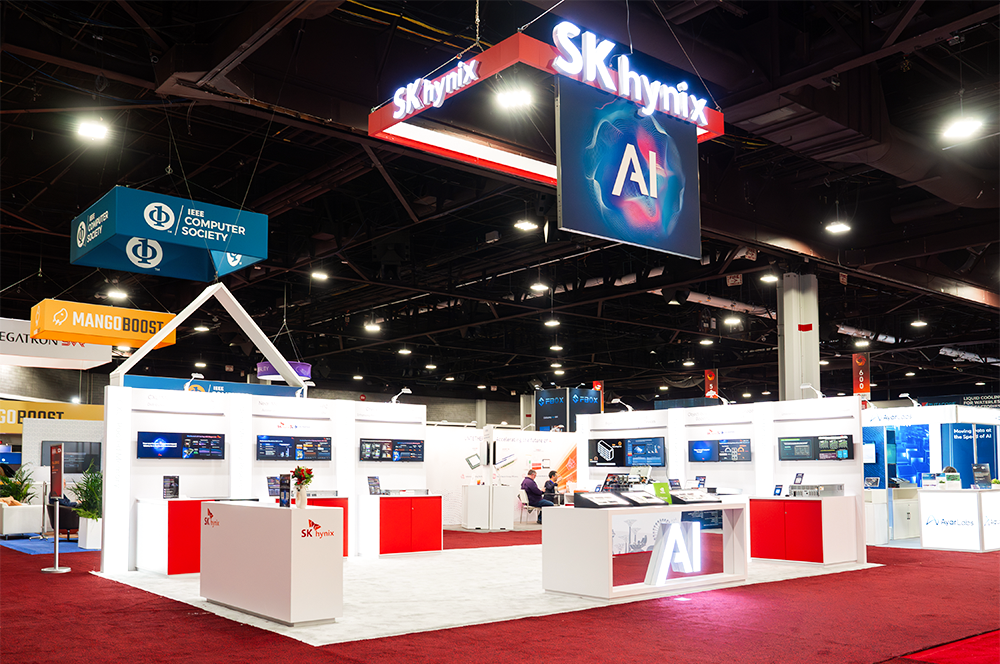AI memory demand fuels SK Hynix’s DRAM market victory

AI memory demand has catapulted SK Hynix to a top position in the global DRAM market, overtaking longtime leader Samsung for the first time.
According to Counterpoint Research data, SK Hynix captured 36% of the DRAM market in Q1 2025, compared to Samsung’s 34% share.
HBM chips drive market shift
The company’s achievement ends Samsung’s three-decade dominance in DRAM manufacturing and comes shortly after SK Hynix’s operating profit passed Samsung’s in Q4 2024.
The company’s strategic focus on high-bandwidth memory (HBM) chips, essential components for artificial intelligence applications, has proven to be the decisive factor in the market shift.
“The is a milestone for SK Hynix which is successfully delivering on DRAM to a market that continues to show unfettered demand for HBM memory,” said Jeongku Choi, senior analyst at Counterpoint Research.
“The manufacturing of specialised HBM DRAM chips has been notoriously tricky and those that got it right early on have reaped dividends.”
SK Hynix has taken the overall DRAM market lead and has established its dominance in the HBM sector, occupying 70% of this high-value market segment, according to Counterpoint Research.
HBM chips, which stack multiple DRAM dies to dramatically increase data processing capabilities, have become fundamental components for training AI models.
“It’s another wake-up call for Samsung,” said MS Hwang, research director at Counterpoint Research in Seoul, as quoted by Bloomberg. Hwang noted that SK Hynix’s leadership in HBM chips likely comprised a larger portion of the company’s operating income.
Financial performance and industry outlook
The company is expected to report positive financial results on Thursday, with analysts projecting a 38% quarterly rise in sales and a 129% increase in operating profit for the March quarter, according to Bloomberg data.
The shift in market leadership reflects broader changes in the semiconductor industry as AI applications drive demand for specialised memory solutions.
While traditional DRAM remains essential for computing devices, HBM chips that can handle the enormous data requirements of generative AI systems are becoming increasingly valuable.
Market research firm TrendForce forecasts that SK Hynix will maintain its leadership position throughout 2025, coming to control over 50% of the HBM market in gigabit shipments.
Samsung’s share is expected to decline to under 30%, while Micron Technology is said to gain ground to take close to 20% of the market.
Counterpoint Research expects the overall DRAM market in Q2 2025 to maintain similar patterns across segment growth and vendor share, suggesting SK Hynix’s newfound leadership position may be sustainable in the near term.
Navigating potential AI memory demand headwinds
Despite the current AI memory demand boom, industry analysts identify several challenges on the horizon. “Right now the world is focused on the impact of tariffs, so the question is: what’s going to happen with HBM DRAM?” said MS Hwang.
“At least in the short term, the segment is less likely to be affected by any trade shock as AI demand should remain strong. More significantly, the end product for HBM is AI servers, which – by definition – can be borderless.”
However, longer-term risks remain significant. Counterpoint Research sees potential threats to HBM DRAM market growth “stemming from structural challenges brought on by trade shock that could trigger a recession or even a depression.”
Morgan Stanley analysts, led by Shawn Kim, expressed similar sentiment in a note to investors cited by Bloomberg: “The real tariff impact on memory resembles an iceberg, with most danger unseen below the surface and still approaching.”
The analysts cautioned that earnings reports might be overshadowed by these larger macroeconomic forces. Interestingly, despite SK Hynix’s current advantage, Morgan Stanley still favours Samsung as their top pick in the memory sector.
“It can better withstand a macro slowdown, is priced at trough multiples, has optionality of future growth via HBM, and is buying back shares every day,” analysts wrote.
Samsung is scheduled to provide its complete financial statement with net income and divisional breakdowns on April 30, after reporting preliminary operating profit of 6.6 trillion won ($6 billion) on revenue of 79 trillion won earlier this month.
The shift in competitive positioning between the two South Korean memory giants underscores how specialised AI components are reshaping the semiconductor industry.
SK Hynix’s early and aggressive investment in HBM technology has paid off, though Samsung’s considerable resources ensure the rivalry will continue.
For the broader technology ecosystem, the change in DRAM market leadership signals the growing importance of AI-specific hardware components.
As data centres worldwide continue expanding to support increasingly-sophisticated AI models, AI memory demand should remain robust despite potential macroeconomic headwinds.
(Image credit: SK Hynix)
See also: Samsung aims to boost on-device AI with LPDDR5X DRAM

Want to learn more about AI and big data from industry leaders? Check out AI & Big Data Expo taking place in Amsterdam, California, and London. The comprehensive event is co-located with other leading events including Intelligent Automation Conference, BlockX, Digital Transformation Week, and Cyber Security & Cloud Expo.
Explore other upcoming enterprise technology events and webinars powered by TechForge here.



